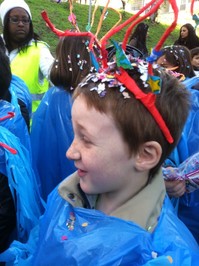
The most popular era of roman carnival started with the venetian pope Paul II (1464-1471 ) who introduced major celebrations held along the Corso road and piazza Venezia. He transferred his residence in piazza Venezia and ordered the festival to be moved there.
There were various bizarre and cruel competitions and races taking place along the one mile long Corso avenue that involved people and animals. The end was in Venetia square and the prize was a Palio: a precious banner or a cloth given to the winner
Another sad tradition was the ‘Pallio de li Judei’: eight Jewish naked runners were subject to ridicule and harassment.
In 1667 Pope Clement IX put an end to this competitions which were later substituted with the ‘Corsa dei Berberi’. The Jews race was abolished but the community annually had to pay a tax that was used to build the stage of the authorities and to purchase the winner Palio prize.
The barber race was the highlight and became a great attraction for nobles, artists and travelers who came to Rome to see the see the race.
it was a wild horse race starting at piazza del Popolo and ending in Venezia square. The barber were little adorned northern African horses let loose, incited by screams and enraged by sharp points placed on their hips.
Nobles and cardinals possessed their horse and watched the race from stages set up along the way. In 1974 the race was abolished by king Victor Emanuel IIafter a boy was overrun and died.
In navona square fireworks and recreational games took place.
Carnival floats inspired on mythological or political events were set by the neighborhoods, city authorities and noble families. Masked parades paraded throughout the city
There were such excesses that edicts were issued trying to regulate and calm down the wild attitude of the romans, particularly the launch of objects The punishment could be death or public punishments.



